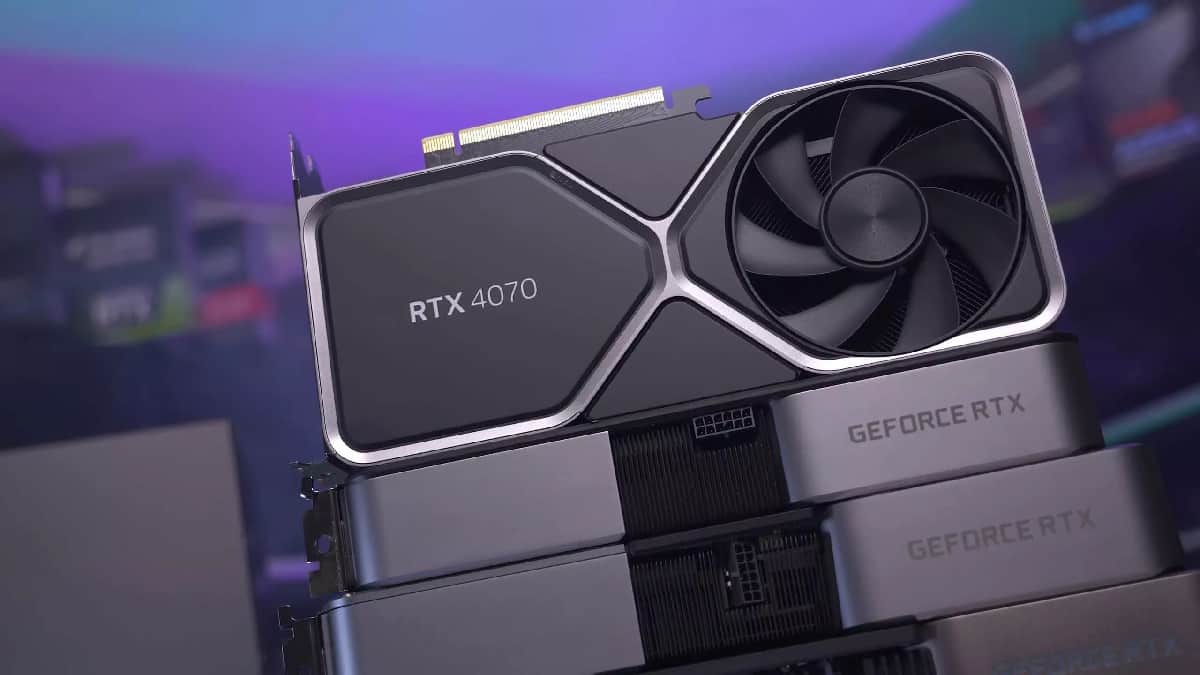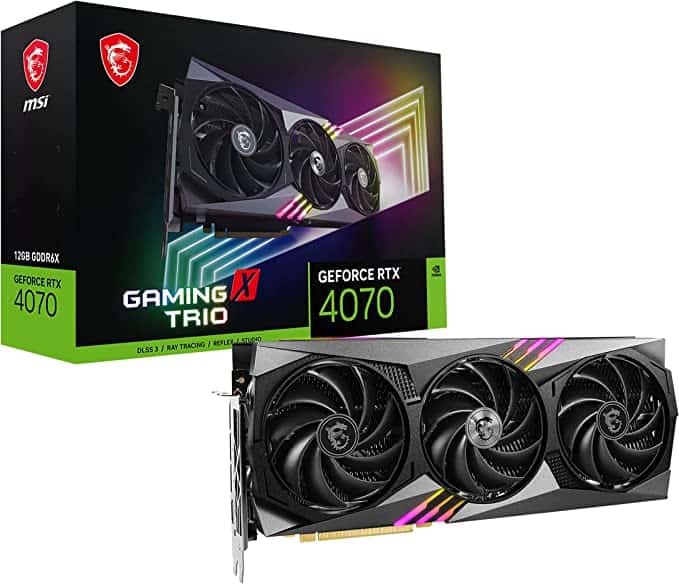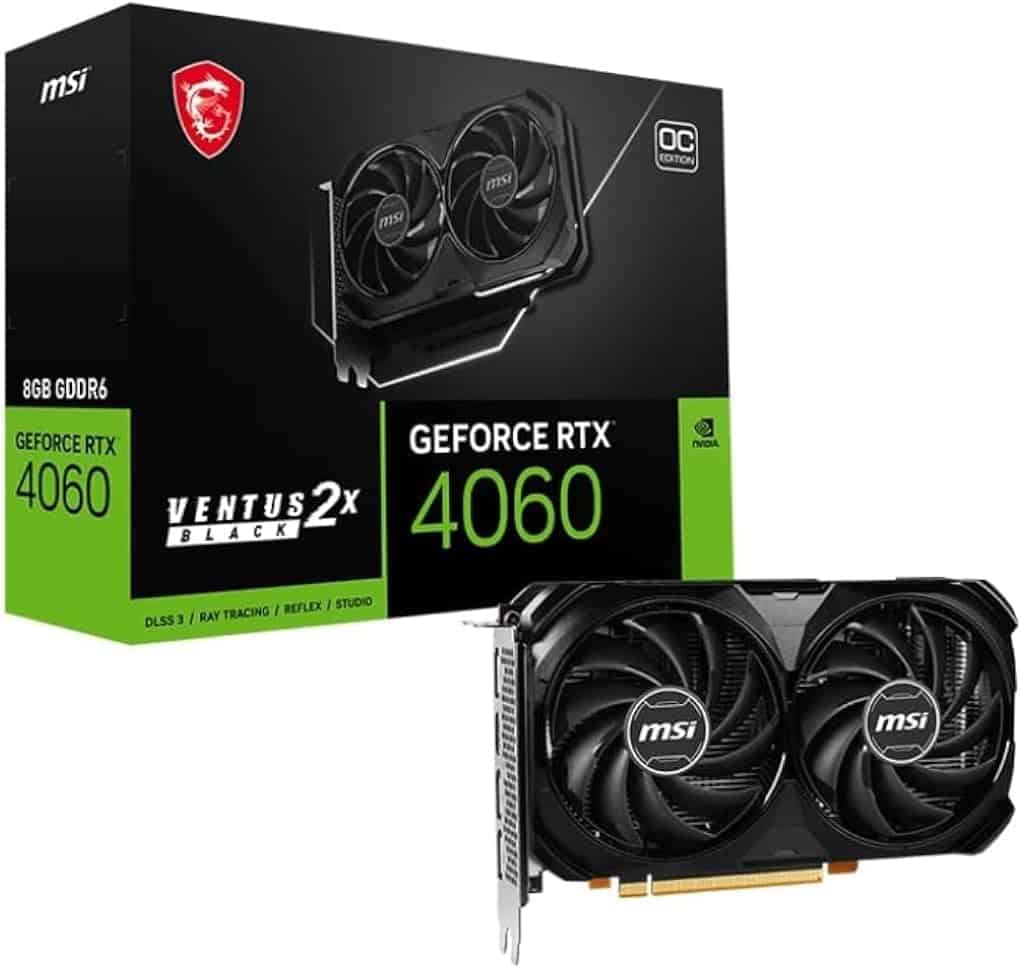RTX 4060 Ti 16GB vs RTX 4070 – Ada Lovelace cage match

Table of Contents
Nvidia continues to redefine the landscape of graphic cards, aiming to bring an unparalleled gaming experience to all, particularly those navigating the delicate space between true mid-range and less powerful options. In this article, we’ll examine the upcoming RTX 4060 Ti 16GB vs the RTX 4070, analyzing how this new Ada Lovelace architecture contender with its expanded memory measures up against one of Nvidia’s best PC hardware options.
Let’s delve into this comparative assessment of RTX 4060 Ti 16GB and RTX 4070 graphics cards, and explore how Nvidia is bridging the gap between these mid-range GPUs in terms of overall benchmarks, specs, and more. For the full deep dive, our RTX 4060 Ti review has a more thorough analysis.
RTX 4060 Ti 16GB vs RTX 4070: specs
The RTX 4060 Ti 16GB, although a newer model, comes with a slightly lower price tag while offering more VRAM – a total of 16GB GDDR6, compared to the 12GB GDDR6X in the RTX 4070. This implies that the RTX 4060 Ti 16GB could offer better performance in workloads that demand a large amount of video memory.
The 4060 Ti’s base and boost clock speeds also outperform the 4070’s, with base and boost clocks of 2310 MHz and 2535 MHz respectively, compared to the 4070’s 1920 MHz and 2475 MHz. This suggests that the 4060 Ti might deliver superior raw performance in terms of processing speed.
| Specs | RTX 4060 Ti 16GB | RTX 4070 |
|---|---|---|
| Architecture | AD106 | AD104 |
| Cores | 4352 | 5888 |
| Texture Units | 136 | 184 |
| RT Cores | 32 | 46 |
| Base Clock | 2310 MHz | 1920 MHz |
| Boost Clock | 2535 MHz | 2475 MHz |
| Memory | 16GB GDDR6 | 12GB GDDR6X |
| Memory Interface | 128-bit | 192 bit |
| TDP | 165 W | 200W |
| Price | $499 | $599 |
However, the RTX 4070 has a wider memory interface at 192-bit compared to the 128-bit memory bus of the RTX 4060 Ti 16GB. This, coupled with its GDDR6X memory – an improvement over the GDDR6 used in the 4060 Ti – might result in faster data transfer and increased bandwidth, potentially outdoing the 4060 Ti in certain scenarios, like ray tracing.
The two GPUs also differ in their core counts, with the RTX 4070 offering more cores, which might give it an edge in ray-tracing and texture rendering capabilities. The 4070 also has a higher TDP (thermal design power), suggesting it may deliver higher performance but at the cost of more power consumption and heat output.
In conclusion, these GPUs target different niches within the mid-range market. Choosing between the RTX 4060 Ti 16GB and RTX 4070 will largely depend on your specific needs and budget considerations. We look forward to seeing how the real-world performance of these GPUs matches up to their specifications.
RTX 4060 Ti 16GB vs RTX 4070: Performance
The RTX 4070 has certainly established itself as a robust choice for gamers and content creators alike, delivering smooth 1440p gaming and tackling demanding workloads and frames with ease. The success of the RTX 4070 can largely be attributed to its advanced GDDR6X memory and 192-bit memory interface. These features combine to provide faster data transfer, leading to higher bandwidth, and consequently, enhanced performance.
When it comes to the upcoming RTX 4060 Ti 16GB, it might seem that by simply expanding the VRAM, Nvidia intends to overcome any performance limitations. However, a larger VRAM does not necessarily guarantee better performance. While a larger VRAM will certainly help in scenarios that demand high video memory, such as 4K gaming, large-scale rendering, or advanced video editing, the overall performance of a GPU is a result of the harmony between its various components.
One such crucial aspect is the memory interface. The RTX 4060 Ti’s 128-bit memory bandwidth is smaller than the RTX 4070’s 192-bit interface. To understand why this matters, it helps to think of the memory interface as a highway – the wider it is, the more lanes there are for data (vehicles) to travel across. Thus, a larger memory interface can facilitate more data to be transferred simultaneously, leading to improved performance.
With a smaller memory interface, the RTX 4060 Ti 16GB might face challenges accessing its larger VRAM quickly. The data ‘bottleneck’ caused by the limited ‘lanes’ for data transfer may hinder the GPU’s ability to fully utilize the larger VRAM. The more advanced GDDR6X memory of the RTX 4070, combined with a wider memory interface, could potentially outpace the 4060 Ti in certain scenarios, despite the latter’s larger VRAM.
However, the real-world performance comparison will significantly depend on the specific gaming or workload scenarios. Some applications may favor the larger VRAM of the 4060 Ti, while others may benefit more from the 4070’s wider memory interface and faster GDDR6X memory. As with any hardware comparison, the ‘best’ choice ultimately depends on the individual user’s needs, preferences, and budget.
RTX 4060 Ti 16GB vs RTX 4070: Price
In terms of pricing, Nvidia’s strategy has certainly been puzzling for many tech enthusiasts. Given the pressing need to make mid-range GPU options more accessible, it would seem logical for the company to lower its prices. However, the pricing structure of these two GPUs suggests a different story.
The RTX 4070 has an MSRP of $599, a mere $100 more than the upcoming RTX 4060 Ti 16GB, which is priced at $499. When considering the significant performance boost and features offered by the 4070, this price difference can be seen as a justified and relatively small additional investment for significantly enhanced capabilities.
The Nvidia GeForce RTX 4060 Ti is set to launch in late July and will be a significant upgrade over the base 4060 variant.
RTX 4060 Ti 16GB vs RTX 4070: Final thoughts
When comparing the RTX 4060 Ti 16GB and RTX 4070, it’s clear that the 4070 stands out as the stronger of the two. Not only does it boast a more advanced GDDR6X memory and a wider memory interface, but it also provides a superior performance that outpaces the 4060 Ti in a variety of scenarios, making it an excellent choice for both high-end gaming and demanding workloads.
The 4060 Ti 16GB, despite its larger VRAM, is hindered by its smaller memory interface, which could lead to potential bottlenecks in data transfer and limit its ability to fully utilize its VRAM.
However, it is important to note that the ‘best’ GPU can vary greatly based on the individual needs, preferences, and budgets of users. While the 4070 may offer greater overall performance, the 4060 Ti may still find a niche audience who specifically require a larger VRAM for certain tasks, such as 4K gaming, and are willing to compromise on some performance aspects.
Nevertheless, for most consumers seeking a blend of price and performance, the RTX 4070 undoubtedly presents a more compelling package. The slightly higher price point is justified by the more robust features and superior performance, making it a worthy investment in the long run. Hence, Nvidia’s RTX 4070 emerges as the clear winner in this GPU comparison.
FAQs
What is better 4060 Ti or 4070?
When comparing the RTX 4060 Ti 16GB and the RTX 4070, the RTX 4070 comes out as the better option. This is primarily due to its advanced GDDR6X memory, wider 192-bit memory interface, and superior performance in terms of core counts and clock speeds. These features enable the RTX 4070 to provide more efficient performance and better frame rates in high-end gaming and demanding workloads.


